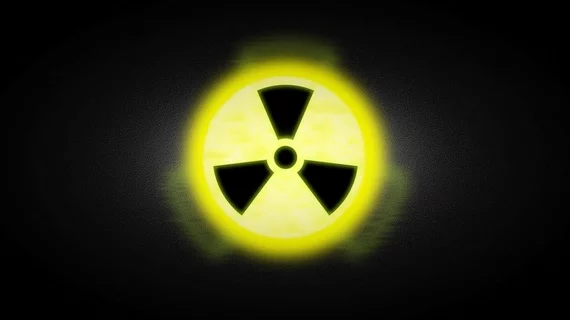Physicians were exposed to seven times the amount of radiation when they performed coronary angiography on morbidly obese patients compared to those with normal bodyweights, according to a single-center study published Jan. 2 in Circulation: Cardiovascular Interventions.
“The greatest source of physician radiation exposure during cardiac catheterization comes from scatter radiation emitted from the patient, which itself is proportional to patient radiation dose,” wrote lead author Ryan D. Madder, MD, with Spectrum Health in Grand Rapids, Michigan, and colleagues. “Because greater radiation doses are required to produce adequate images in obese patients, greater amounts of scatter radiation are emitted, and consequently, the obesity epidemic has the potential to alter the occupational risks of physicians performing cardiac catheterization.”
Physicians at Spectrum Health wore dosimeters to measure radiation exposure during more than 1,000 coronary angiography procedures for the study. Patients with BMIs above 40 were found to experience a 2.1-fold increase in radiation versus those with normal weight (BMI below 25), but the relative radiation increase was seven-fold for physicians treating those heavier individuals. This was even with the doctors following their standard protocol of having two shields placed between them and the patient in all cases, designed to protect both the upper and lower body.
Madder et al. said the low number of morbidly obese patients may have skewed their results, but offered a few other explanations for why the association of BMI and radiation exposure might have been stronger in physicians than patients themselves.
“Physician radiation dose is not solely dependent on DAP (dose area product) but rather depends on other factors as well, including the distance between the physician and the patient, the degree of lead shielding, and the time the physician spends in the zone of scatter radiation,” the researchers wrote. “Thus, it is conceivable that if any of these other factors is unfavorably impacted by increasing patient BMI, then physician radiation dose may increase out of proportion to the DAP alone.”
The authors said that, in working around a large patient, it might be difficult for accessory lead shields to be properly positioned to block radiation.
Although the association between radiation exposure and obesity was strongest at the highest BMIs, both patient and provider radiation exposure increased stepwise at lower levels as BMI went up. Each one-unit increase in BMI was linked to a 5.2 percent higher radiation dose for the physician, despite interventional cardiologists more often using additional radiation-absorbing pads for heavier patients. Notably, the use of radiation-absorbing pads was linked to a 70 percent reduction in exposure in a multiple regression analysis, which also independently associated PCI and fractional flow reserve with a higher physician radiation dose.
“The observations made in this study are concerning considering that long-term radiation exposure among interventional cardiologists has been linked to multiple adverse health effects and that the prevalence of obesity in the cardiac catheterization laboratory has been increasing over time,” Madder and coauthors wrote. “Whereas obesity has been convincingly associated with health problems in patients, the present observations support the need for additional studies to determine whether patient obesity might have an adverse impact on the health of treating physicians by exposing them to greater amounts of radiation during coronary angiography.”
Potential consequences of cumulative exposure to small radiation doses include premature cataract formation, early carotid atherosclerosis, left-sided brain cancer and acute DNA damage, the authors noted. They suggested operators be aware that obese patients may put them at risk of higher radiation exposure and be particularly vigilant about using protective shielding. Hospitals could also help by investing in the best fluoroscopy equipment, which may itself continue to improve and produce high-quality images at lower radiation doses.
The study was limited by its single-center, retrospective design, as well as the fact that patients’ body fat distribution wasn’t recorded. Central adiposity would be expected to require more radiation for angiography than if the patients’ fat were more heavily distributed elsewhere.
Madder reported receiving research grants and serving on the advisory board of Corindus Vascular Robotics, which partially funded the study. Corindus’ technology recently facilitated the first in-human remote PCIs, during which an operator performed “tele-stenting” procedures on five different patients located 20 miles away. Eliminating operator radiation exposure from up-close procedures has been touted as one of the robotic platform’s benefits.

